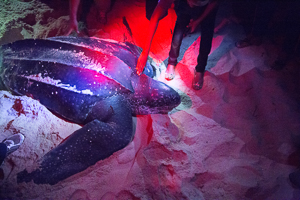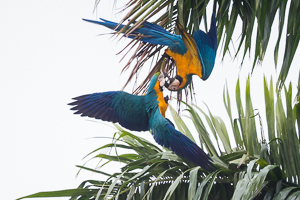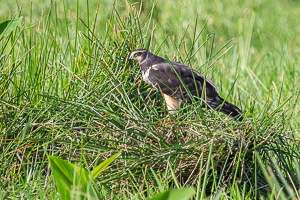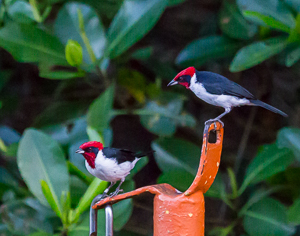Asa Wright Nature Center (AWNC)
We are happy to report that ASA Wright Nature Center is now open again (April 23) after a long down time during Covid. The center has seen a major renovation. They are once again accepting visitors. Please see updates on their website. Additional information on visiting can be found at Visiting the Asa Wright Nature Center
My favorite place is the Asa Wright Nature Center. It has a rainforest setting in northern mountain range. A former plantation located it is now one of the worlds premier bird watching sites.
The AWNC is a “Not-for-Profit” Trust established in 1967 by a group of naturalists and bird-watchers to “protect part of the Arima Valley in a natural state and to create a conservation and study area for the protection of wildlife and for the enjoyment of all.” It was one of the first nature centers to be established in the Caribbean.
Comprising nearly 1,500 acres of mainly forested land in the Arima and Aripo Valleys of the Northern Range, the AWNC’s properties will be retained under forest cover in perpetuity, to protect the community watershed and provide important wildlife habitat.
The Centre’s main facilities are located on a former cocoa-coffee-citrus plantation, previously known as the Spring Hill Estate. This estate has now been partly reclaimed by secondary forest, surrounded by impressive rainforest, where some original climax forest on the steeper slopes have a canopy of 100-150 feet. The whole effect is one of being deep in tropical rainforest. Asa Wright Web Page
I have visited AWNC on many occasions and always had a wonderful time. You can sit on the porch and watch the birds with out moving from your seat, or take hikes along the many well maintained trails. For overnight visitors, the night walk is a unique experience as is the Oilbird cave for those who choose to stay longer. The food prepared on site is mostly local grown and very good.
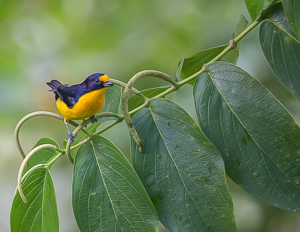
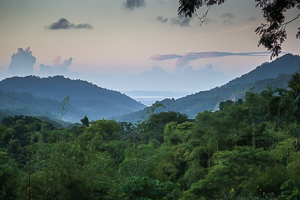

Caroni Swamp
The Caroni Swamp is the second largest mangrove wetland in Trinidad and Tobago. It is located on the west coast of Trinidad, south of Port of Spain and northwest of Chaguanas, where the Caroni River meets the Gulf of Paria.
The Caroni Swamp is an estuarine system comprising 5,611 hectares of mangrove forest and herbaceous marsh, interrupted by numerous channels, and brackish and saline lagoons, and with extensive inter-tidal mudflats on the seaward side. This swamp is an important wetland since it is ecologically diverse, consisting of marshes, mangrove swamp and tidal mudflats in close proximity. The wetland provides a variety of habitats for flora and fauna species and as such, supports a rich biodiversity. The Caroni Swamp runs along the banks of the Caroni River and contains numerous channels, brackish and saline lagoons with inter-tidal mudflats. The Caroni Swamp also contains fresh water and saltwater marshes and is also known as a bird sanctuary. The central section of the acreage is designated as a wildlife sanctuary and is the home of one of Trinidad and Tobago’s national bird, the Scarlet Ibis. The Caroni Swamp is the major roosting place for the Scarlet Ibis and is also the home of over 100 avian species.
Bird Sanctuary
The Caroni Swamp is also a wonderful site for bird watching. It is home to over 100 bird species. In 1962, when Trinidad and Tobago gained independence from Great Britain, the Scarlet Ibis was chosen as the national bird of Trinidad. The Scarlet Ibis then gained protection and could no longer be hunted. The Scarlet Ibis, travels to Venezuela every day from the Caroni Swamp. The distance between the swamp and the mainland of Venezuela is about 11 miles. During the evening, the Scarlet Ibis returns to the Swamp where it roosts in the mangrove trees. Watching the Scarlet Ibis return from feeding on the mainland of Venezuela is the main attraction for many tourists. Their vibrant red feathers fill the sky as they return to the swamp. The Scarlet Ibis’ bright red color comes from the pigments from their food. Their diet consists of crustaceans, crabs small fish, mollusks, worms, and insects. The Scarlet Ibis is protected in Trinidad and Tobago but is at risk from poaching and pollution of the Swamp.
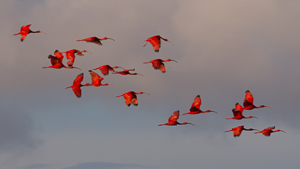
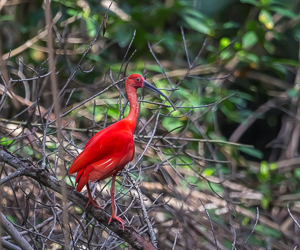
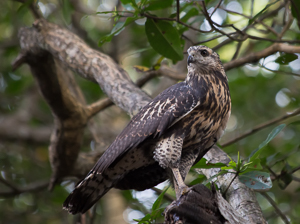

Nariva Swamp
The Nariva Swamp is the largest freshwater wetland in Trinidad. The swamp is located on the east coast of Trinidad immediately inland from the Manzanilla Bay through Biche and covers over 60 square kilometers. The Nariva Swamp is extremely biodiverse. It is home to 45 mammal species, 39 reptile species, 33 fish species, 204 bird species, 19 frog species, 213 insect species and 15 mollusk species. All this contained in just 60 square kilometers.
Habitat for Many Species
The area provides important habitat for waterfowl and is key habitat for the West Indian manatee, caymans, anacondas, boa constrictors. red howler monkeys, white-fronted capuchin monkeys, numerous species of parrots, including both the blue-and-gold macaw and the red-bellied macaws, as well as many wetland and savanna birds.
Four major wetland vegetation types occur in the Nariva Swamp - mangrove swamp forest, palm forest, swamp wood, and freshwater marsh.
Conservation
The Nariva Swamp, 6,234 hectares, was declared to be a forest reserve in 1954. The Bush Bush section of the Nariva Swamp 1,408 hectares (3,480 acres) is an area of high ground that was declared as a wildlife sanctuary in 1968, and a prohibited area in 1989 by Dr. Keith Rowley (legal notice no 78 by then Minister of Agriculture, Land and Marine Resources). The site was thus reserved as a local and international research center, and in theory no hunting or harvesting was allowed on the site.
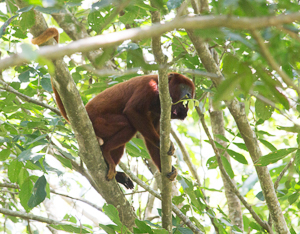
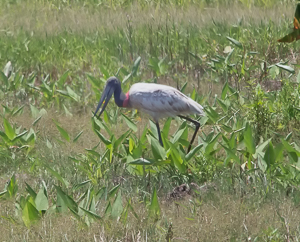
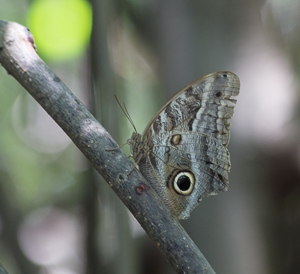
Pitch Lake
The Pitch Lake is the largest natural deposit of asphalt in the world. it is located at La Brea in southwest Trinidad. The lake covers about 40 Hectare and is reported to be 75 m deep. Pitch Lake is a major tourist attraction with 20,000 visitors annually. It is also mined for asphalt by Lake Asphalt of Trinidad and Tobago.
History
The Pitch Lake has fascinated Western explorers and scientists, as well as attracting tourists, since its discovery by Sir Walter Raleigh in his expedition there in 1595. (The native Indians knew about and showed it to him to help him caulk his boat). Since its re-discovery, there have been numerous research investigations into the use and chemical composition of this material. There have been countless theories, postulations, and conclusions as to the size, source, and origin of the asphalt.
Geology
The origin of The Pitch Lake is related to deep faults in connection with subduction under the Caribbean Plate related to Barbados Arc. The lake has not been studied extensively, but it is believed that the lake is at the intersection of two faults, which allows oil from a deep deposit to be forced up. The lighter elements in the oil evaporate under the hot tropical sun, leaving behind the heavier asphalt. Bacterial action on the asphalt at low pressures creates petroleum in asphalt. The Pitch Lake is one of several natural asphalt lakes in the world.
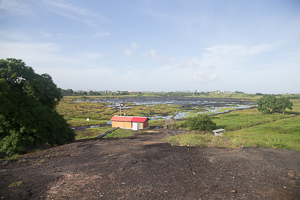


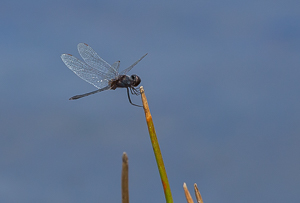
Turtle Watching
From March to September (and sometimes as early as January), Trinidad takes on a very important role: the second largest leatherback turtle nesting site in the world is at Grande Rivière. In fact, Trinidad and Tobago are two of the world’s most important turtle nesting grounds, and not only for the endangered leatherbacks. Hawksbill, green turtles, and other species — all of which are legally protected.
Both Grande Rivière and Matura are well-known and protected beaches in northeast Trinidad. In Tobago, turtles frequent the beaches of the Leeward coast, especially Stonehaven and Courland (or Turtle) beaches.
Yerette: Home of the Hummingbird
A hummingbird sanctuary located in a present suburban setting, gives credence to the Amerindian saying that Trinidad and Tobago is the Land of the Hummingbird. It is located in Trinidad’s lush Maracas Valley. Gloria and Theo Ferguson are gracious hosts and welcome visitors to their home. Theo is an accomplished raconteur and very knowledgeable on the subject of hummingbirds. The yard abounds with hundreds of hummingbirds and most of the 18 varieties found in Trinidad and Tobago can be found there at one time or another.
Zoo and Botanical Gardens
Emperor Valley Zoo
The Emperor Valley Zoo is situated adjacent to the Botanical Gardens, Port of Spain, Trinidad. The exhibits are spread over a 7.2 acreage, with much of the flora of the original site retained, thus enhancing the overall landscape. Enclosures, pathways, fences and buildings have been incorporated into the natural topography creating a wilderness atmosphere and a feeling of relaxation for the many visitors who come each year.
Royal Botanic Gardens of Trinidad and Tobago
The Gardens are comprised of twenty-five (25) hectares of beautifully landscaped grounds located north of the capital city of Port of Spain. The gardens consist of approximately seven hundred (700) trees of which thirteen percent (13%) are indigenous to Trinidad and Tobago. Trees in our gardens represent every continent of the world.
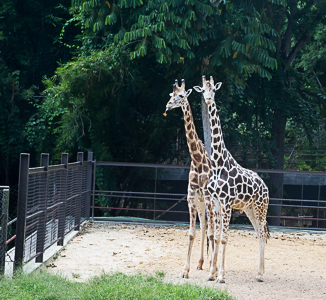
Pointe-a-Pierre Wildfowl Trust
Since 1966, the Pointe-a-Pierre Wildfowl Trust has been actively breeding and releasing locally endangered waterfowl. In 1997 & 1999, Scarlet Ibis and Blue and Gold Macaws, which had been bred at the Trust were released. To complement the breeding and release of these endangered birds into existing wetland habitats to ensure viable populations, the Trust has also designed and implemented Environmental Education & Public Awareness Programs shared daily with our student and public visitors, on and off site
For Visits To The Pointe-a-Pierre Wildfowl Trust Reservations Must Be Made in Advance. Please call 612-2463/ 658-4200 ext. 2512#
Rodger Neckles, Bird and Photography Guide
Rodger Neckles
Born in Trinidad and raised and schooled in London, England, Wildlife Photographer/Naturalist Roger Neckles is considered by many to be the Caribbean’s most prominent wildlife photographer. See his full bio on his site here.
Trips and Workshops
Rodger conducts many trips and workshops in Trinidad and elsewhere around the world. He was able to organize day trips for small groups of cruisers interested in birding and photography. The trips were tailored to our interests and what birds were seen most reciently.
Central Trinidad and Northern Range
The first trip I did with Rodger started early in the day at the Caroni Swamp. There we saw the Masked Cardinal and of course the Scarlet Ibis. We then traveled into the central valley and explored the former sugar cane plantations and rice fields. We saw a number of grass land birds, including Southern Lapwings in a lettice field. Later in the day, we traveled to the northern mountains to observe hummingbirds at several locations.
Southwest Trinidad and Farmlands
A recient trip with Rodger focused on seeing macaws. We were up early and drove to southwestern Trinidad. It was an area were Rodger had seen the mecaws reciently. He spotted a flock of nine Blue and Yellow Mecaws. We were able to watch their antics for more than a half hour before they flew off. Driving around to relocate the flock we spotted a Scarlet Mecaw as well. After a breakfast, we moved on to the southern mountains to see what we could find. We spotted an Amazonian White-tailed Trogon, a Yellow-rumped Cacique, and several unique interesting birds. Our final stop was the farmlands. There I was able to photograph a flock of Green-rumped Parrotlets in an okra field. The highlight of the day was Rodger spotting a Long-winged Harrier. We saw it first in flight and then feeding on a pray close at hand.
